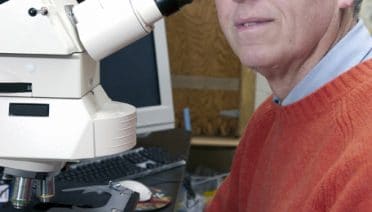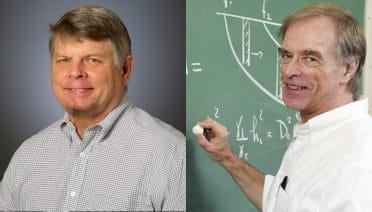Press Room
Six scientists from Woods Hole Oceanographic Institution (WHOI) have contributed to a new report finding “compelling evidence” that the Deepwater Horizon oil spill has impacted deep-sea coral communities in the Gulf of Mexico. The study, published the week of March…
Increased global temperatures are frequently viewed as the cause of glacial melt, but a new study of Patagonia’s Gualas Glacier highlights the role of precipitation in the glacier’s fluctuation. The study, conducted by Sbastien Bertrand of the Woods Hole Oceanographic Institution (WHOI) and his colleagues, compares past temperature and rainfall data with sediment records of glacier fluctuations and the historical observations of early Spanish explorers.
A fundamental shift in the Indian monsoon has occurred over the last few millennia, from a steady humid monsoon that favored lush vegetation to extended periods of drought, reports a new study led by researchers at the Woods Hole Oceanographic Institution (WHOI). The study has implications for our understanding of the monsoon’s response to climate change.
The March 11, 2011, earthquake, tsunami, and subsequent radioactivity releases from the Fukushima Dai-ichi nuclear power plants resulted in the largest accidental release of radiation to the ocean in history. In a special session on Tuesday, Feb. 21, during the…
Jim Yoder Named 2012 fellow of The Oceanography Society Jim Yoder, Vice President for Academic Programs and Dean at the Woods Hole Oceanographic Institution (WHOI), has been named a 2012 fellow of The Oceanography Society (TOS)—the only fellow named this…
One of the most dangerous faults in North America is the Pacific Northwest’s Cascadia fault – an offshore, subduction zone fault capable of producing a magnitude 9 earthquake that would damage Portland, Tacoma, Seattle, and Victoria, British Columbia, and generate a large tsunami. Yet there are currently no instruments installed offshore, directly above the fault, for measuring the strain that is currently building up along the fault.
But a recent $1 million grant from The W. M. Keck Foundation to scientists at the Woods Hole Oceanographic Institution (WHOI) will change that. An interdisciplinary project led by WHOI geologist Jeff McGuire, an expert in global earthquake seismology and geodesy, and John Collins, director of WHOI’s Ocean Bottom Seismometer Lab, will build and install the first seafloor geodesy observatory above the expected rupture zone of the next great Cascadia earthquake.
Woods Hole Oceanographic Institution Senior Scientists Lloyd Keigwin and Robert Weller have been elected 2012 fellows of the American Association for the Advancement of Science (AAAS). Election as a fellow is an honor bestowed upon AAAS members by their peers.…
The National Academy of Sciences (NAS) has awarded John Waterbury, scientist emeritus in the Biology Department at the Woods Hole Oceanographic Institution (WHOI), the 2012 Gilbert Morgan Smith Medal. Waterbury is among 17 individuals honored by NAS this year in…
Shortly after the Deepwater Horizon disaster, mysterious honeycomb material was found floating in the Gulf of Mexico and along coastal beaches. Using state-of-the-art chemical forensics and a bit of old-fashioned detective work, a research team led by scientists at Woods…
Louis St. Laurent of the Woods Hole Oceanographic Institution (WHOI) was selected by the American Meteorological Society (AMS) to receive the prestigious Nicholas P. Fofonoff Award. There will be a formal presentation at the Annual Awards Banquet on January 25,…
A new study provides a composite picture of the environmental distribution of oil and gas from the 2010 Deepwater Horizon spill in the Gulf of Mexico. It amasses a vast collection of available atmospheric, surface and subsurface chemical data to…
How do marine mammals, whose very survival depends on regular diving, manage to avoid decompression sickness? Do they, indeed, avoid it? A workshop held by WHOI’s Marine Mammal Center brought together the world’s experts in human diving and marine-mammal diving physiology to discuss the issue of how marine mammals manage gas under pressure.
Woods Hole Oceanographic Institution scientists Henry Dick, a geologist, and Joseph Pedlosky, a physical oceanographer, have been selected to receive two of the American Geophysical Union’s prestigious medals this year. The awards will be given at an honors ceremony on December 7 in San Francisco at the American Geophysical Union (AGU) Fall Meeting, the largest worldwide conference in the geophysical sciences, attracting nearly 20,000 Earth and space scientists, educators, students, and policy makers.
The impact on the ocean of releases of radioactivity from the Fukushima nuclear power plants remains unclear. But a new study by U.S. and Japanese researchers analyzes the levels of radioactivity discharged from the facility in the first four months after the accident and draws some basic conclusions about the history of contaminant releases to the ocean.
The research vessel Atlantis, operated by Woods Hole Oceanographic Institution (WHOI), rescued 93 Egyptians aboard a disabled fishing boat in the Mediterranean Sea late Friday night (Nov. 25).
Woods Hole Oceanographic Institution (WHOI) Executive Vice President and Director of Research Larry Madin will join Massachusetts Governor Deval Patrick and a coalition of business executives, academic leaders, and government officials on the Massachusetts-Brazil Innovation Economy Mission 2011 this December to pursue job growth and economic development partnerships between Massachusetts and Brazil.
Global warming could destabilize the pool of carbon in the Ganges-Brahmaputra basin and similar places on Earth, potentially increasing the rate of CO2 release into the atmosphere.
A WHOI-led project is one of several major awards recently announced by the National Science Foundation’s (NSF) Dimensions in Biodiversity research program. The multi-disciplinary, international collaborative effort will advance our understanding of deep-sea hydrothermal vent microbial communities and their global impact.
WHOI and the Consortium for Ocean Leadership announced McLane Research Laboratories, of East Falmouth, Mass., will provide the Wire Following Profilers for the Coastal and Global Scale Nodes component of the Ocean Observatories Initiative (OOI) program. WHOI, as implementing organization…
In a study published online in the Proceedings of the Royal Society B, a team that includes researchers from the Woods Hole Oceanographic Institution (WHOI) has confirmed that bubbles do form in live, stranded dolphins. But in many cases, those animals are able to manage those bubbles and can resume relatively normal lives of swimming and diving in the ocean.





